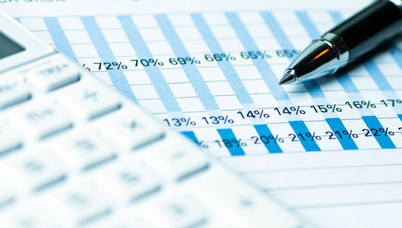Debt Monthly View for April 2023
Posted On Monday, May 08, 2023
Indian bonds yields came down sharply in April after the surprise pause in the rate hiking cycle (against market consensus expectation of 25bps hike) at start of the month. The downward momentum in yields was further boosted by the lower-than-expected inflation print for March which came in at 5.66% vs consensus estimate of ~5.9%.
The 10-year benchmark government bond (Gsec) yield fell by 20 basis points to end the month at 7.12% vs 7.32% in the previous month.
Money market rates also eased during the month supported by influx of liquidity amid increased government spending post financial year closing. The yield on the AAA rated 3 months commercial papers (CPs) fell from ~7.30% on March 31, 2023 to 7.15% on April 30, 2023.
In its first bi-monthly monetary policy of FY24, the Monetary Policy Committee (MPC) left the key repo rate unchanged. This came as a positive surprise for the bond market as there was a broader expectation of a 25-basis point rate hike.
RBI’s commentary was mixed. On one hand, the RBI retained the policy stance as ‘withdrawal of accommodation’ and used phrases like ‘for this meeting only’and ‘a pause not pivot’ to indicate that rate hiking cycle is not over yet. While on the other hand, the governor made repeated reference to the potential impact of the effective 290 basis points of rate increases delivered over the last 12 months.
The bond rally following the monetary policy suggests that the bond market is more aligned with the view that the repo rate has peaked at 6.50% and the RBI will remain on extended pause before start cutting interest rates. This view is also supported by an expectation that inflation will come down sharply over the next 3-6 months and will stay close to 5% in FY24.
There are clear signs of inflation easing. The headline CPI inflation eased to 5.66% YoY in March 23 from 6.44% YoY in February 23, core inflation also registered 5.95% YoY in March 23, its first sub-6% print in 18 months.
It’s vital to highlight the high inflation of the last year was mainly contributed by spike in food and fuel costs amid the Russia-Ukraine war and budding demand after easing off Covid-19. The impact of these one-off price shocks is now fading. Over the next 2-3 month, the favourable base effect (of high prices last year) should bring down the CPI inflation sharply below 5%.
When we look closely into the host of items in the CPI baskets, we find that the month-on-month intensity has been easing off sequentially for most of the items. Among the food and beverages group components like vegetables, protein and others have shown a sizable decline. These easing food prices contributed to easing of headline inflation. However, between January-March 23, month-on-month change in CPI, excluding volatile prices of fruits, vegetables and gold, is merely ~0.24%. The current trend supports a decline in inflation to the 4%-5% band without needing any radical policy treatment.
In addition to the falling inflation, the RBI will also have a supportive external environment to end the rate hiking cycle. Globally, inflation is coming down and growth is slowing. The economic outlook is further clouded by the series of bank failures in the US.
In its latest meeting in May, the US federal reserve hiked the fed funds rate by 25 basis points as expected. However, it dropped the guidance of additional tightening being appropriate from the policy statement. This is seen as the last rate hike with the fed funds rate peaking at current 5.0%-5.25% range. This should stop/reverse the Dollar rally and bring relief for the emerging markets like India.
India’s external position has also strengthened due to meaningful improvement in the current account balance. The current deficit is likely to be a lot narrower at near 2% of GDP in FY23 than the earlier estimates of over 3%. With the drop in crude oil prices, increased inward remittances and booming services exports, India’s external position is likely to remain comfortable making the domestic economy more resilient against external shock.
Outlook
With the falling inflation, peaked policy rates and comfortable external position, the backdrop is supportive for the bond market.
However, from a near term perspective, almost all the positives are already in price. The 10 year Government bond (G-sec) yield has come down from 7.45% in March to near 7.0% now. Unless the RBI shifts towards a rate cut, bond yields are unlikely to sustain below 7%.
We would continue to expect the 10-year government bonds to trade between a range of 7.00%-7.30%. Since, currently the yield is near the lower bound, we expect a pull back in near term.
In line with our near-term cautious view, we have lowered the portfolio duration of the actively managed bond fund as a tactical position.
Notwithstanding the near-term valuation concerns, we maintain our constructive outlook for long bonds in medium term. With bond yields around 7%, much of the government bond yield curve is offering reasonably high positive real yield. Based on the 4 quarter ahead expected CPI inflation of 5.2% and the 1-year government bond yield at 7%, real interest rate is around 180 basis points.
Also, with the rate hiking cycle nearing end and inflation trending down, probability of capital gains in long term bonds over the medium term has increased. Investors with over 2-3 years investment horizon should allocate to dynamic bond funds which tends to benefit in this kind of interest rate environment.
Dynamic bond funds have the flexibility to change the portfolio positioning as per the evolving market conditions which makes dynamic bond funds better suited for long-term investors in this volatile macro environment.
Investors with shorter investment horizon and low risk appetite should stick with liquid funds. Tightening liquidity condition will continue to put upward pressure on short term rate and is in turn positive for short term debt fund categories like liquid fund. We would expect further improvement in return potential of these categories as interest accrual on short term debt instruments have risen meaningfully.
Since the interest rate on bank saving accounts are not likely to increase quickly while the returns from liquid fund are already seeing an increase, investing in liquid funds looks more attractive for your surplus funds.
Investors with little desire to take risks, should invest in liquid funds which own government securities and do not invest in private sector companies which carry lower liquidity and higher risk of capital loss in case of default.
Source: RBI
Disclaimer, Statutory Details & Risk Factors:The views expressed here in this article / video are for general information and reading purpose only and do not constitute any guidelines and recommendations on any course of action to be followed by the reader. Quantum AMC / Quantum Mutual Fund is not guaranteeing / offering / communicating any indicative yield on investments made in the scheme(s). The views are not meant to serve as a professional guide / investment advice / intended to be an offer or solicitation for the purchase or sale of any financial product or instrument or mutual fund units for the reader. The article has been prepared on the basis of publicly available information, internally developed data and other sources believed to be reliable. Whilst no action has been solicited based upon the information provided herein, due care has been taken to ensure that the facts are accurate and views given are fair and reasonable as on date. Readers of this article should rely on information/data arising out of their own investigations and advised to seek independent professional advice and arrive at an informed decision before making any investments. Mutual fund investments are subject to market risks read all scheme related documents carefully. |
Related Posts
-

Debt Monthly View for April 2025
Posted On Wednesday, May 07, 2025
In April 2025, the Reserve Bank of India...
Read More -

Debt Monthly View for March 2025
Posted On Monday, Apr 07, 2025
In March 2025, both U.S. Treasury and Indian Government Bond yields cooled off
Read More -

Debt Monthly View for February 2025
Posted On Friday, Mar 07, 2025
February 2025 kicked off with two key events in Indian bond markets: the Union Budget and RBI's Monetary Policy.
Read More




